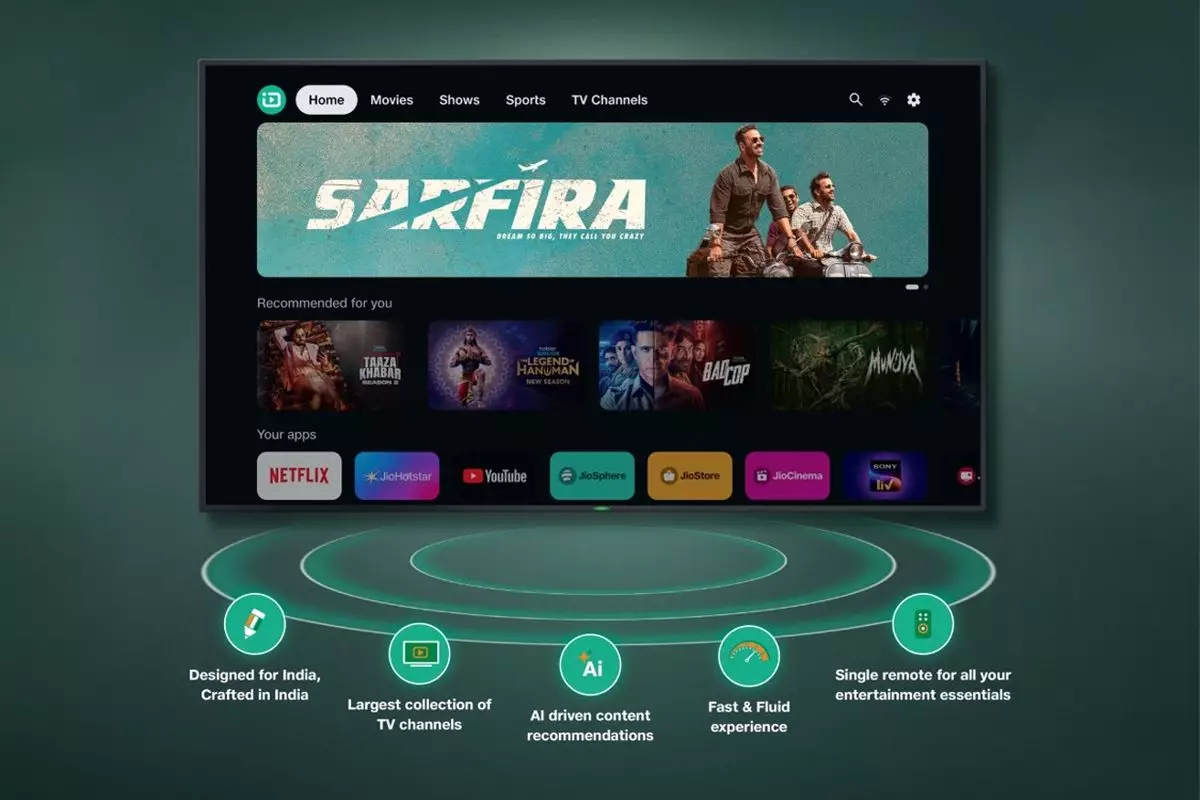Recently unveiled, JioTele OS emerges as a compelling new operating system for smart televisions, targeting the rapidly evolving market of connected TVs in India. With its ambitious goal of reshaping how viewers interact with digital content, this innovative platform aims to combine traditional television with cutting-edge technology. The focus is not solely on entertainment; JioTele OS aspires to enhance user experience through artificial intelligence (AI) and seamless content integration.
JioTele OS positions itself as a noteworthy contender among established platforms, aiming to garner attention with features that cater to both traditional audiences and modern streaming habits. By supporting a variety of over-the-top (OTT) applications alongside conventional TV channels, JioTele OS promises a comprehensive viewing experience. Notably, the operating system’s ability to incorporate regional and global content further tailors the platform to cater to India’s diverse audience. However, the specifics of how this integration will manifest remain vague, which leaves potential users curious yet cautious.
One of the standout features of JioTele OS is its AI-driven content recommendation system, which seeks to personalize user experiences. While the concept of using AI to curate content is not new, the effectiveness of this feature hinges on its underlying algorithms. Jio must clarify whether these recommendations will be generated based on the user’s watch history, trending selections, or other metrics. As personalization becomes a critical aspect of user engagement, the platform’s success will heavily rely on delivering relevant suggestions that resonate with viewers’ preferences.
Performance and Technical Specifications
Jio has made bold claims about the performance of smart TVs running JioTele OS, specifically in terms of delivering “lag-free 4K performance.” However, such claims raise questions about the compatibility of the OS with different hardware specifications. The performance can significantly vary based on the smart TV model in use, and without a clearly delineated minimum standard, consumers may experience discrepancies in performance across devices. To bolster confidence in its technology, Jio must provide a transparent framework regarding hardware requirements for optimal performance.
Commitment to Updates and Security
A strong commitment to regular software updates is a highlight of JioTele OS, ensuring that the platform evolves over time. Continuous updates are crucial for maintaining app compatibility and addressing security vulnerabilities that may arise. In an age where cyber threats to connected devices are ever-present, Jio’s proactive stance on security could set a positive precedent. Nonetheless, users will need assurance that these updates will be timely and effective across all supported television brands.
The Road Ahead for JioTele OS
JioTele OS is set to make its debut on February 21, with select models from recognized brands like BPL, JVC, Kodak, and Thompson available for purchase. However, for the platform to gain traction, it will need to establish partnerships with a broader range of original equipment manufacturers (OEMs). If successful, JioTele OS could reshape the smart TV landscape in India, particularly for consumers seeking a tailored, all-in-one entertainment solution. The coming months will be pivotal, as further model releases and updates will determine the operating system’s viability and competitiveness in a crowded market.


Leave a Reply